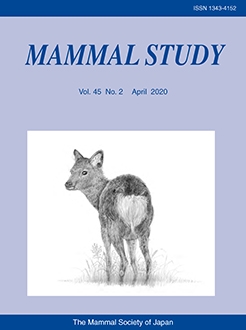Deer have been artificially introduced into many countries that are not within their native range. In some cases, they have disturbed the natural ecosystem in the invaded area. On Okinoshima Island in Wakayama Prefecture, Japan, exotic deer were introduced from Taiwan in 1955 and have since bred in the wild, raising concerns about their invasion into the habitats of, and hybridization with, the native Japanese sika deer. To determine the extent of gene introgression, we investigated the population structure of deer on Okinoshima Island and the surrounding areas, including the islands of Awajishima and Jinoshima, and the mainland area in the western Kii Peninsula. Genetic analyses using microsatellite and mitochondrial DNA markers revealed that both exotic deer and Japanese sika deer inhabited Jinoshima Island. On the other hand, one of the individuals captured on the mainland was a first-generation hybrid between the exotic and native deer. These results suggest the bi-directional movement of the exotic and native deer between the islands and the mainland, with the potential for hybridization.
How to translate text using browser tools
6 April 2020
Bi-Directional Movement of Deer between Tomogashima Islands and the Western Part of the Kii Peninsula, Japan, with Special Reference to Hybridization between the Japanese Sika Deer (Cervus nippon centralis) and the Introduced Exotic Deer
Toshihito Takagi,
Yuki Matsumoto,
Ryosuke Koda,
Hidetoshi B. Tamate
ACCESS THE FULL ARTICLE

Mammal Study
Vol. 45 • No. 2
April 2020
Vol. 45 • No. 2
April 2020
Bayesian population assignment
CERVUS
introgression
invasive species
mitochondrial DNA tandem repeats




